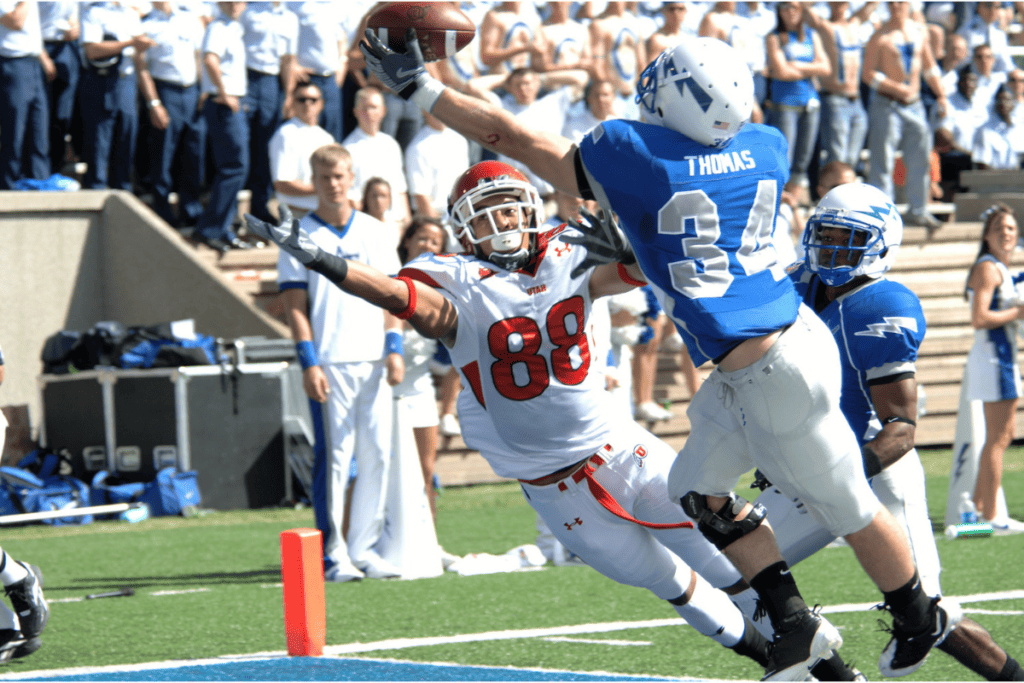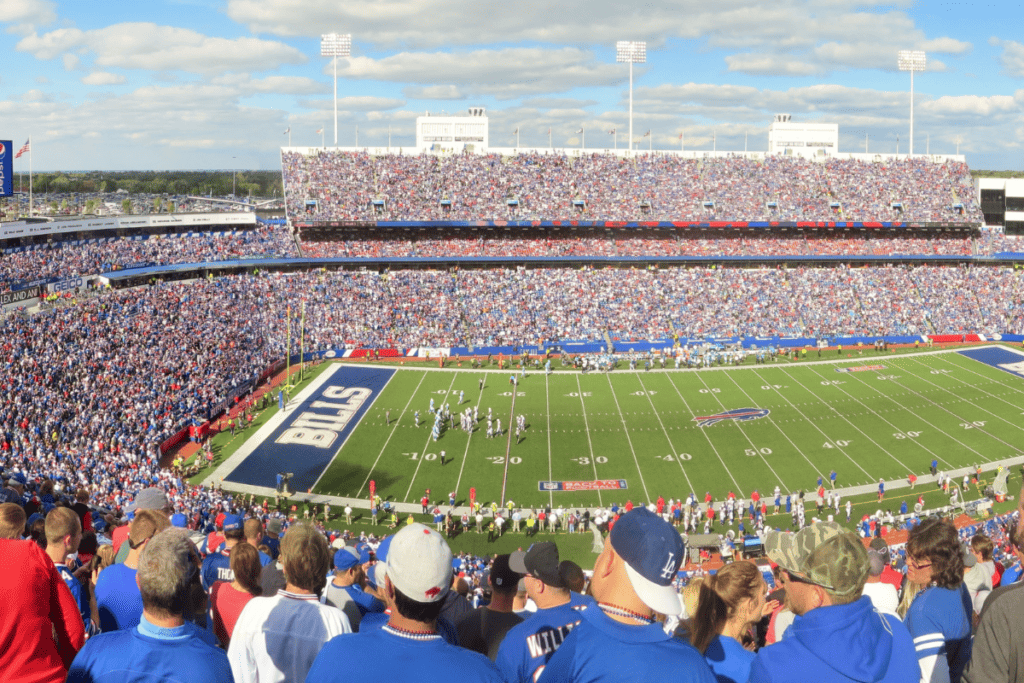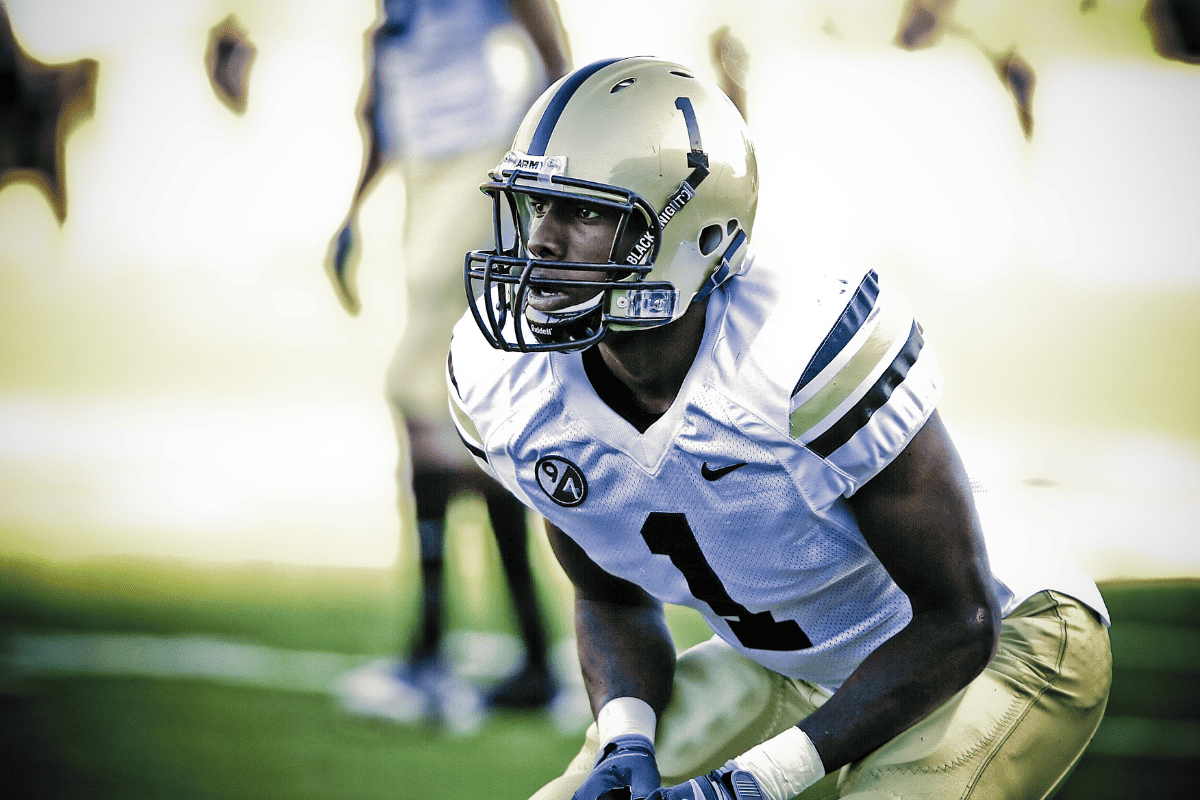What is Press Coverage in Football? (Simply Explained)
When we talk about football, it’s not just about the flashy touchdowns or the quarterback’s rocket arm. It’s equally about the gritty, tactical showdowns on the other side of the ball – the defense.
One such strategy is the “Press Man Coverage.” This defensive technique isn’t just a play; it’s a bold statement, a chess move on the gridiron that can shape the outcome of a game.
In this article, we’ll dive into the nuts and bolts of press man coverage, unraveling its complexities to make it accessible even to those who are new to the intricacies of football. Get ready to discover how this strategy plays a pivotal role in the grand scheme of the sport.
The Basics of Press Man Coverage
At its core, press man coverage is a defensive strategy used by the secondary, particularly the cornerbacks.
The primary goal?
Disrupt the passing game of the offense. In this setup, defensive backs line up directly across from the receivers, usually within a yard or two from the line of scrimmage. Their mission is simple yet demanding: to prevent the receivers from getting into their routes smoothly or, ideally, at all.
Key Features
- Close Proximity at the Line of Scrimmage: Unlike off-man coverage, where defenders give receivers space, press man requires cornerbacks to be right in the faces of the receivers at the snap. This proximity is crucial for the initial physical engagement.
- Physical Engagement: As the ball is snapped, the defenders use their hands and body to ‘jam’ or disrupt the receivers, aiming to throw off the timing of their routes. This physical confrontation is a defining trait of press man coverage.
- Man-to-Man Assignment: Each defender is responsible for a particular receiver. Once the initial jam is executed, they must stick with their assigned player, mirroring their movements across the field.
- Isolation: Press man coverage (especially zero coverage) often leaves defenders in one-on-one situations with no immediate help. It’s a high-risk, high-reward scenario that relies heavily on the cornerback’s athletic ability and technique.
Press Man vs. Zone Coverage
While press man coverage focuses on individual battles, zone coverage is about defending a specific area of the field. In zone, defenders react to the ball entering their zone rather than sticking to a specific player. This fundamental difference in philosophy underlines the contrast in the approach and skill set required for each.
By understanding these basics, we lay the foundation to delve deeper into the roles, techniques, and nuances of press man coverage in the sections to follow.
Press Man Coverage Roles
Now let’s focus on the different individual positions and their role within press man coverage.
Cornerbacks: The Frontline Warriors
- Initial Engagement: Cornerbacks in press man coverage are the first line of defense against receivers. Their primary task at the snap is to disrupt the receiver’s route, typically through a technique called “jamming.”
- Jamming Technique: This involves using their hands and body to impede the receiver’s movement, ideally within the first five yards where contact is legal. The goal is to throw off the timing and rhythm of the route.
- Footwork and Agility: Post-jam, cornerbacks must exhibit exceptional footwork and agility to shadow the receiver. This includes backpedaling, turning, and sprinting, all while maintaining close coverage.
- Play Recognition: They must also possess sharp play recognition skills to anticipate routes and make split-second decisions to stick with their assigned receiver.
Safeties: The Overarching Support
- Dual Role: In press man coverage, safeties often have a dual role. They provide deep coverage support, ensuring that if a receiver gets past the cornerback, they are there to prevent a big play.
- Run Support: Safeties also keep an eye on the run game, ready to step up and make a tackle if the play turns out to be a run.
- Adjusting to Threats: Their position on the field allows safeties to read the quarterback and adjust their coverage based on the unfolding play. This could mean double-teaming a particularly dangerous receiver or stepping up to intercept a pass.
Linebackers: The Versatile Middlemen
- Coverage and Blitzing: Linebackers in a press man scheme may have coverage responsibilities, especially against tight ends or running backs. They also play a key role in blitzing, taking advantage of the man coverage to pressure the quarterback.
- Adaptability: Their role requires a balance between pass coverage and run defense, making adaptability a key trait for linebackers in this system.
Defensive Line: The Pressure Creators

- Quarterback Pressure: While not in coverage themselves, the defensive line’s role in press man is crucial. By generating pressure on the quarterback, they reduce the time he has to exploit any weaknesses in the man coverage.
- Run Defense: Their ability to stop the run forces the offense to rely more on passing, where press man coverage can be most effective.
Integrating Roles for Team Success
The effectiveness of press man coverage relies not just on the individual skills of the cornerbacks and safeties, but on the cohesive functioning of the entire defensive unit.
Each player’s role, from the jamming at the line by the cornerbacks to the deep coverage by the safeties, the adaptability of the linebackers, and the pressure from the defensive line, must harmonize to create a formidable defense.
This coordination is essential to counter the sophisticated offenses in modern football, making press man coverage a challenging yet rewarding strategy when executed correctly.
Advantages and Challenges of Press Man Coverage

Advantages of Press Man Coverage
- Disrupting Offensive Timing: The initial physical contact at the line of scrimmage is designed to throw off the timing between the quarterback and his receivers. This disruption can be crucial, especially against offenses that rely on precision and timing.
- Forcing Difficult Throws: By sticking close to receivers, defenders in press man coverage force quarterbacks to make perfect throws. The smaller windows of opportunity increase the chance of incomplete passes or interceptions.
- Aggressive Defensive Posture: Press man coverage is a show of defensive confidence. It sends a clear message of aggression and can sometimes intimidate opposing receivers and quarterbacks.
- Flexibility for Blitzes: With defenders engaged in man-to-man battles, defenses can afford to send extra players to blitz the quarterback, increasing pressure and potentially leading to sacks or hurried throws.
Challenges of Press Man Coverage
- Risk of Deep Passes: If a receiver breaks free from the jam at the line, they often find themselves with a lot of open field. This makes defenses employing press man coverage vulnerable to deep passes and big plays.
- Reliance on Cornerback Athleticism: Success in press man coverage hinges on the cornerback’s physical abilities and technique. If the cornerback is outmatched, it can lead to consistent gains for the offense.
- Potential for Penalties: The physical nature of press man coverage can sometimes lead to penalties like holding or pass interference, especially if the defender is not careful with their technique.
- Stress on Secondary: Constant one-on-one matchups can be mentally and physically taxing for defenders, requiring excellent conditioning and focus.
Famous Examples of Press Man Coverage in Action
- The Legion of Boom: The Seattle Seahawks’ secondary, famously known as the “Legion of Boom,” utilized press man coverage to great effect. Their physical style of play and the ability to disrupt receivers at the line became a hallmark of their defensive dominance.
- Revis Island: Darrelle Revis, a cornerback renowned for his ability in man coverage, often left on an island with the opposing team’s best receiver. His success in press man coverage earned him the nickname “Revis Island.”
Impact on the Game
- Changing Offensive Strategies: The effectiveness of press man coverage has led some offenses to adapt, emphasizing quicker releases and routes that are harder to disrupt at the line.
- Influence on Draft and Player Development: The value placed on cornerbacks who excel in press man coverage has impacted how teams draft and develop players at the position.
- Tactical Evolution: The use of press man coverage has influenced the tactical evolution of the game, leading to new formations and strategies on both sides of the ball.
These examples and impacts illustrate the significant role press man coverage plays in football, shaping not only individual games but also the strategic evolution of the sport. As we see, the chess match between offense and defense is ever-evolving, with press man coverage being a key piece in the defensive arsenal.
Press Man Coverage in Different Levels of Football

Pro Football
- High Skill and Athleticism: In the NFL, press man coverage is a common sight, as the players possess the requisite skill and athleticism. Cornerbacks in the NFL are often among the best athletes on the field, capable of mirroring elite receivers step for step.
- Strategic Use: Professional teams use press man coverage selectively, often in critical situations or against specific opponents. Coaches and players adjust this strategy based on the matchup and game situation.
College Football
- Variation in Skill Level: In college, the effectiveness of press man coverage can vary significantly. While top-tier programs may have athletes capable of executing it effectively, lower-tier teams might struggle due to the varied skill levels.
- Developmental Tool: College is often where players refine the skills necessary for press man coverage, making it a crucial developmental step for aspiring professional cornerbacks.
High School Football
- Less Prevalent: Due to the wide disparity in player development and athleticism, press man coverage is less common in high school football.
- Simplified Schemes: When used, it tends to be in a more simplified form. High school coaches often focus on developing fundamental skills that will serve players at higher levels.
Conclusion
Press man coverage is more than just a defensive tactic; it’s a barometer of a team’s defensive philosophy, athlete’s skill level, and a coach’s strategic acumen. From the professional arenas of the NFL to the developmental grounds of college and high school football, its implementation and effectiveness vary widely, but its impact remains significant.
As we’ve seen, the advantages of press man coverage, like disrupting timing and forcing difficult throws, are balanced by challenges such as vulnerability to deep passes and the physical demands it places on players.
The legendary “Legion of Boom” and the isolated brilliance of “Revis Island” are testaments to its potency at the highest levels, while its adaptation across different levels of football illustrates its fundamental role in the sport.
We hope this guide has provided you with a clearer understanding of press man coverage and its role in football. Whether you’re watching a high school game, a college showdown, or an NFL matchup, keep an eye out for this strategy and observe how it influences the game’s outcome.

